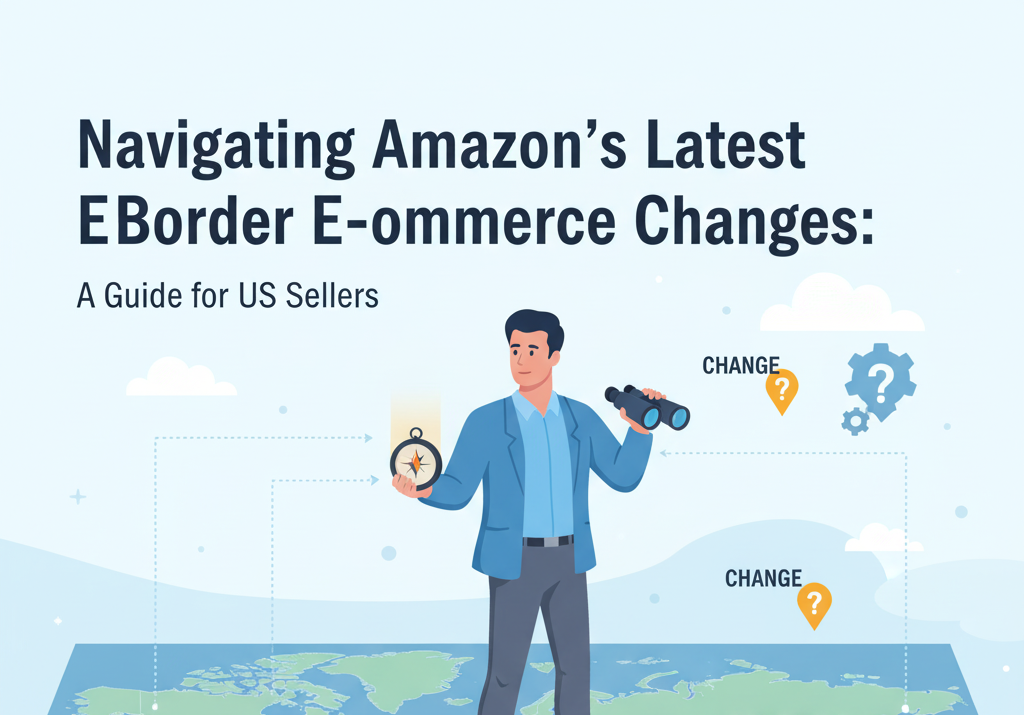Address
304 North Cardinal St.
Dorchester Center, MA 02124
Work Hours
Monday to Friday: 7AM - 7PM
Weekend: 10AM - 5PM

In the dynamic world of Amazon cross-border e-commerce, staying ahead of platform updates is crucial for US-based sellers and e-commerce brands. Recent changes by Amazon—spanning order processing time flexibility, a new seller challenge feature, algorithm adjustments for ASIN search traffic, and enhancements to the Account Health Assurance (AHA) program—are reshaping how sellers operate. This guide breaks down these updates, helping you leverage them to optimize inventory, boost search visibility, and elevate customer experience.
For years, Amazon’s mandatory 2-day order processing policy put pressure on sellers to fulfill orders quickly, often leading to inventory management headaches and compromised order quality. Now, Amazon has lifted this mandate, allowing US cross-border sellers to define their own order processing timeframes.
This change is a game-changer for inventory and production planning. Sellers can now set processing times of 1 day, 2 days, or longer, based on their unique business needs—whether that’s inventory levels, manufacturing cycles, or shipping capabilities. The key is to balance flexibility with customer expectations: while longer processing times can reduce operational stress, overly extended timelines may deter buyers.
To implement this, navigate to your Amazon seller dashboard and adjust the processing time settings. Align these timelines with your inventory forecasts and delivery workflows. For example, if your product requires 3 days for manufacturing and 1 day for packaging, set a 4-day processing time. This transparency helps manage customer expectations and reduces the risk of late shipments, ultimately improving customer experience and order fulfillment reliability.
Amazon’s new Seller Challenge feature, exclusive to Account Health Assurance (AHA) members, empowers US sellers to contest enforcement decisions. This tool is a critical resource for brands navigating Amazon’s complex compliance landscape.
Here’s how it works: AHA members receive 3 challenge opportunities every 180 days. If you disagree with a platform enforcement action (e.g., a product listing removal), you can initiate a challenge. Success means Amazon will reverse the decision; failure means you’ll wait 6 months to try again. Note: Losing AHA eligibility revokes any remaining challenge rights, so use them strategically.
To maximize this feature, familiarize yourself with Amazon’s policies and gather thorough evidence before submitting a challenge. Whether it’s a misunderstood product compliance issue or a listing violation appeal, Seller Challenge adds a layer of protection for your cross-border e-commerce business.
Amazon’s latest algorithm update is a boon for sellers using multi-variant (parent-child) ASIN structures. Previously, only the parent ASIN or a single child ASIN would rank in search results. Now, when the variant structure is logical (e.g., different sizes or colors of the same product), multiple child ASINs can appear in search results simultaneously.
This change stems from three factors: – A focus on user experience (shoppers see more relevant options). – The inherent advantages of parent-child ASIN organization (e.g., consolidated reviews). – The need for comprehensive keyword coverage (different child ASINs can target distinct keywords).
To capitalize on this, avoid common pitfalls like grouping irrelevant products or including underperforming “weak” child ASINs. Define clear “primary” and “secondary” child ASINs, optimize each with targeted keywords, and ensure your variant structure makes sense to both Amazon’s algorithm and shoppers. For example, if you sell a skincare line, group different product sizes (travel, full-sized) or formulations (hydrating, mattifying) as child ASINs under a single parent. This way, each variant can capture search traffic for its unique keywords, boosting your overall visibility.
The order processing time update isn’t just about flexibility—it’s about aligning inventory management with customer expectations. US cross-border sellers must now: – Audit inventory levels regularly to ensure processing time promises are feasible. – Sync production cycles with processing time settings (e.g., a 5-day manufacturing lead time means setting a minimum 5-day processing time). – Communicate clearly with customers about delivery timelines, using Amazon’s tools to set accurate expectations.
By tying inventory, processing time, and customer experience together, you reduce the risk of canceled orders and negative reviews—key to long-term success in Amazon cross-border e-commerce.
Ready to implement these Amazon updates into your cross-border e-commerce strategy? Whether you need help optimizing ASIN structures, navigating Seller Challenge, or aligning inventory with processing times, our team of Amazon experts is here to support your US-based brand. Contact us today for a personalized consultation—let’s turn these platform changes into growth opportunities.
A1: Only members of Amazon’s Account Health Assurance (AHA) program can access Seller Challenge. AHA is designed for sellers with strong account health, so maintaining compliance is key to eligibility.
A2: Ensure variants are truly related (e.g., same product, different attributes like color/size). Optimize each child ASIN with unique keywords, and avoid including underperforming or irrelevant products that could dilute traffic.
A3: Yes, you can adjust processing times in your seller dashboard. However, frequent changes may confuse customers, so set realistic timelines based on your operations and stick to them.